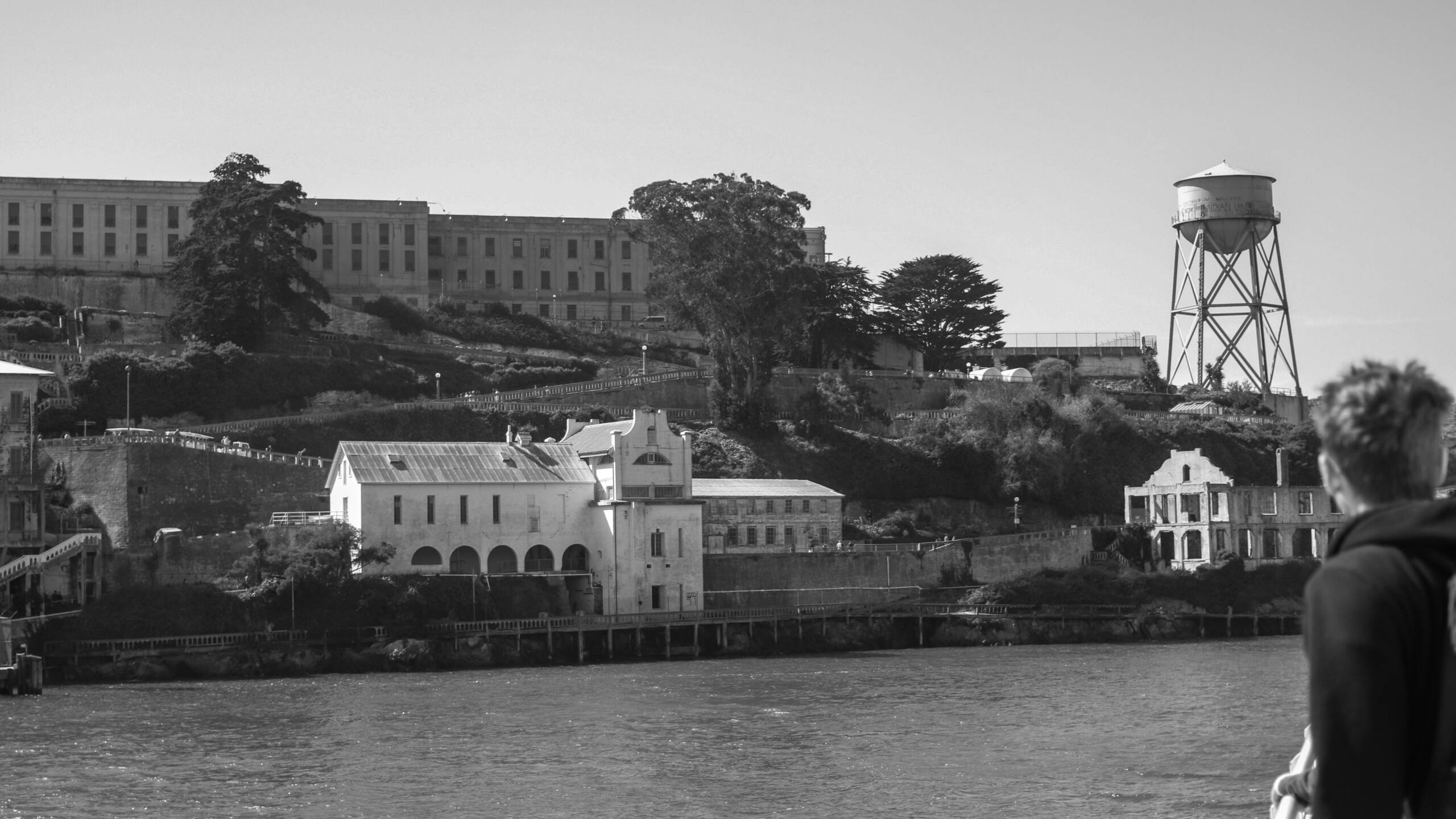A serene yet haunting black-and-white photograph captures Alcatraz Island from the waters of San Francisco Bay, encapsulating the enduring fascination this infamous landmark holds. At the center, the stark silhouette of Alcatraz prison stretches imposingly along the island’s crest, underscored by the solemn, weathered structures that once housed some of America’s most notorious criminals. To the right, a solitary water tower stands tall against the clear sky, a silent guardian overlooking the island. The image evokes the undeniable aura of isolation and foreboding that has long drawn visitors from around the globe, eager to explore its storied cells and corridors. In the foreground, blurred figures hint at visitors gazing thoughtfully at this legendary piece of history, perhaps reflecting on its grim past and contemplating its uncertain future.

Yet, Alcatraz’s current identity as a beloved, if eerie, tourist attraction may soon come to an abrupt end. Recently, former U.S. President Donald Trump has sparked significant debate and controversy by declaring his intention to reopen Alcatraz as a functioning federal penitentiary. Writing on his Truth Social platform, Trump stated firmly: “For too long, America has suffered from violent criminals who will never contribute anything except pain and misery. In the past, they didn’t hesitate to imprison the most dangerous criminals and isolate them. That’s how it should be.” Trump’s announcement signals a dramatic shift in the island’s future, potentially transforming it from an intriguing tourist destination back into a symbol of strict incarceration.
The implications of such a decision are far-reaching. Alcatraz ceased operations as a prison in 1963, primarily due to its exorbitant operating costs and logistical challenges, leaving behind decades of notorious history. Its subsequent transformation into a historical site has provided economic benefits, drawing millions of visitors who walk through its cells, experiencing firsthand the chilling reality of imprisonment. The decision to revert Alcatraz to its original purpose raises questions about the practicalities of reinstating operations, as the logistical hurdles that prompted its closure still remain. Moreover, it challenges the value of preserving historical landmarks as cultural heritage versus repurposing them in the face of contemporary societal issues.
Trump’s pronouncement also sparks broader ethical debates concerning the treatment and rehabilitation of prisoners. The isolation strategy employed at Alcatraz during its operational years was heavily criticized for its severity, resulting in psychological distress for inmates. Reinstating such methods would undoubtedly ignite widespread concern about human rights, criminal justice reform, and the effectiveness of harsh penal strategies in curbing violent crime. In this context, Alcatraz symbolizes a tension between punitive approaches to crime and contemporary ideals emphasizing rehabilitation and reform.
For travelers and history enthusiasts, this looming transition poses the question: could the captivating tales of escape attempts, infamous inmates, and mysterious island lore soon become inaccessible? While many might appreciate the intent behind the move toward stricter penal policies, numerous critics and preservationists are advocating strongly for maintaining Alcatraz as a historical landmark, asserting its educational value and economic significance.
Ultimately, the future of Alcatraz Island hangs uncertainly between these opposing visions. Whether it resumes its dark history as a fortress of isolation or remains a site of reflection and learning, the very essence of Alcatraz—as captured poignantly in the photograph—is one that deeply resonates in American memory, symbolizing both our fascination with, and our fears of, isolation and imprisonment.
Leave a Reply